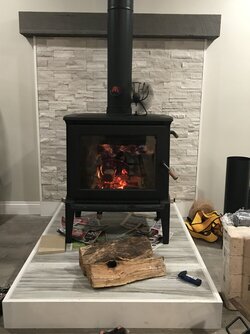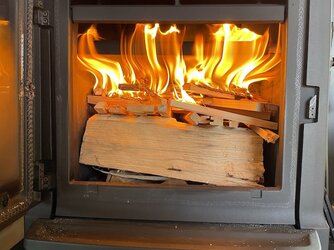Just installed a 3/2021 hearthstone green mountain 60. Tired to do the break in fire as soon as we shut the door the fire went out. Tried again got a small fire going with the door open started smoking in the box big time. Shut the door again and it went out. Our chimney is single wall black pipe to stainless 6” straight up through the roof 15 feet. There’s a great draft. Not sure what the issue is. Before purchasing the stove my wife did research and warned me about this stove. I liked to look so much I purchased anyway. Maybe I should have listened to her.
Thanks for your help
Dan
Thanks for your help
Dan




